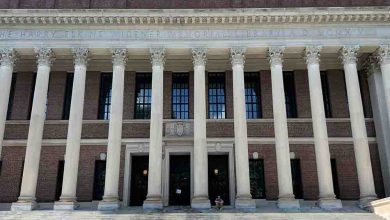Top 10 Student Loans For Single Mothers

Single parents, most especially mothers, make up a sizable proportion of college students, nearly 10%–1.7 million of all U.S. undergraduate students are single mothers.
If you are balancing children, a career, and college classes as a solo parent, you may be eligible for financial aid designed specifically for working adults and parents.
1. Federal Pell Grant
Single mothers who file the simplified 2024-2025 FAFSA beginning in December 2023 will be eligible for the Maximum Pell Grant if their parent(s) are exempt from filing a federal income tax return or if their adjusted gross income is at or below 175% of the family’s poverty level (225% if the parent is single).
A family of four living in the 48 contiguous states with an AGI of up to $52,500 would be eligible for the Maximum Pell Grant under the FAFSA for 2024–2025. While it’s not a loan, it’s a need-based grant for low-income students, including single mothers.
2. Federal Direct Subsidized Loans
With federally subsidized loans, the government pays your interest costs while you are enrolled at least half-time, throughout your grace period, and while you are in deferment. The amount you’ll owe once you begin paying only includes your original principal debt, loan fees, and interest earned in the future.
These loans have low interest rates and are based on financial need.
Eligibility
- You must be a U.S. citizen or a permanent resident
- You must be enrolled at least half-time in an undergraduate degree programme
- You must maintain satisfactory academic progress
- You cannot be in default on a federal student loan
- You must have federal need
5 Things You Need To Know About Federal Subsidized Loans
- Who pays interest costs? The U.S. Department of Education pays interest while the student is enrolled at least half-time, during the six-month post-graduation grace period, and while deferred. The borrower makes regular repayments and pays interest.
- What’s the lifetime maximum limit? $23,000.
- Do you need to demonstrate financial need? Yes.
- Who can borrow? Undergraduate students.
- Are there extra costs involved? 1.057 percent fee for loans disbursed on or after Oct. 1, 2020, and before Oct. 1, 2024.
3. Federal Direct Unsubsidized Loans
A guaranteed student loan for US single mothers or permanent residents who do not meet federal financial necessity requirements. Undergraduate students who have met their borrowing limit for direct-subsidized loans may be eligible for direct-unsubsidized loans as well.
Available to undergraduate and graduate students, not based on financial need.
Eligibility
- You must be a U.S. citizen or a permanent resident
- You must be enrolled at least half-time in a degree programme
- You must maintain satisfactory academic progress
- You cannot be in default on a federal student loan
5 Things You Need To Know About Federal Direct Unsubsidized Loans
- Who pays interest costs? The borrower.
- What’s the lifetime maximum limit? $31,000 for dependent undergraduate students, $57,500 for independent undergraduate students, and $138,500 for most graduate or professional students.
- Do you need to demonstrate financial need? No.
- Who can borrow? Undergraduate students, graduate students, and professional degree students.
- Are there extra costs involved? 1.057 percent fee for loans disbursed on or after Oct. 1, 2020, and before Oct. 1, 2024.
4. PLUS Loans (Parent Loan for Undergraduate Students)
The parent completes the application process online at studentloans.gov. You’ll need your FAFSA pin to start this process with an interest rate of 7.59% for the 2023–24 academic year.
All PLUS loans are subject to 4.228% fees, which are deducted from the amount received. Fees are deducted by the loan servicer when funds are disbursed to the school.
Requirements for obtaining a Parent PLUS Loan are as follows:
1. Parental Relationship:
The borrower must be the student’s biological or adoptive mother or father.
2. Divorce or Separation:
In the case of divorce or separation, either parent is eligible to borrow the Parent PLUS Loan.
3. Remarriage and Stepparents:
If the parent has remarried, the stepparent’s information must be included on the FAFSA. In this situation, the stepparent listed on the FAFSA is also eligible to borrow the Parent PLUS Loan.
4. Citizenship or Eligible Non-Citizen:
The parent must be a United States citizen, a permanent resident, or another eligible non-citizen.
5. Non-Citizen Requirements:
If the parent is a non-citizen, an Alien Registration Number must be provided on the Request for a Federal Direct Parent PLUS Loan.
A photocopy of the front and back of the parent’s Alien Registration Card (I-151 or I-551) must be submitted.
6. Credit History:
The parent must not have an adverse credit history.
7. Federal Education Loan Status:
The parent must not be in default on a federal education loan.
8. Federal Education Grant Overpayment:
The parent must not owe an overpayment on a federal education grant.
Ensuring compliance with these requirements is essential for eligibility to borrow a Parent PLUS Loan.
5. Perkins Loan Program
As an undergraduate student, you may borrow not more than $5,500 every year, for a total of $27,500. Graduate students cannot borrow more than $8,000 per year. You cannot borrow more than $60,000 in undergraduate and graduate Perkins loans combined.
Perkins Loans offers low-interest federal loans for students with exceptional financial needs who attended schools that participated in the Federal Perkins Loan Programme. The authority for schools to make new Perkins loans ceased on October 1, 2023.
If students’ first Perkins loan was made before October 1, 2023, they should contact their college’s financial aid office to enquire about the status of future loans.
FSEOG (Federal Supplemental Educational Opportunity Grant)
The FSEOG aids low-income undergraduate students who require a significant amount of financial aid to help pay for college. Awards might range from $100 to $4,000 per year, depending on the additional financial help you receive and the availability of grant funding at your institution.
Your responses on the FAFSA determine your eligibility. Undergraduate students who demonstrate financial need and have a low Student Aid Index score are eligible. Your SAI is an index number that universities use to calculate how much financial aid you are eligible for.
Students who are eligible for Federal Pell Grants and have the greatest financial need will receive FSEOGs first. The FSEOG does not have to be repaid, save in certain conditions.
State-based Grants and Loans
Almost every state education department offers at least one grant or scholarship to citizens, and many have an extensive list of student aid programmes. Eligibility is typically limited to state citizens attending a college in-state; however, this is not always the case.
Most programmes have annual deadlines (if you miss one, try again next year). Select your state to see what financial aid programmes are offered through your state’s education agency. Check out state and regional tuition exchanges, as well as any state-sponsored aid that may be accessible through local non-profit organisations.
Many states offer financial aid programs for single parents.
Private Student Loans
Private student loans are often supplied by a bank or financial institution (unlike federal student loans, which are provided by the government).
Various private lenders provide student loans. Research and compare interest rates and terms.
Eligibility
Your credit and your cosigner’s credit are examined, along with the other information on your application. Applying for a private student loan with a creditworthy cosigner may boost your chances of acceptance and lower your interest rate.
If you still need money for college, you should look into federal student loans first, followed by private loans.
Women’s Independence Scholarship Program (WISP)
The Women Independence Scholarships Programme is for female survivors of intimate partner abuse who have been separated from their abusive relationship for at least one year but no more than seven years and are sponsored by a domestic violence assistance agency with which they have worked for at least six months.
Funding is available to US citizens and permanent legal residents pursuing a recognized course of study at a US school. The application is only available online, and it must be filed electronically.
Eligibility
- 2.5 Minimum GPA
- Must be Female
- The type of institution award is open to: two-year college
- The type of institution award is open to: four-year college
- The type of institution award is open to: trade or technical school
- The award is available to U.S. citizens
Provides scholarships for women who have survived intimate partner abuse.
Jeannette Rankin Women’s Scholarship Fund
The Jeannette Rankin Foundation is pleased to announce the National Tribal College Scholar Grant programme, which is being run in cooperation with Synchrony and Indigenous Network.
This initiative enables Indigenous women, two-spirit, and non-binary students above the age of 25 to receive financial aid to further their studies.
A grateful thanks to Synchrony and the Indigenous Network for their essential assistance. Apply by February 16, 2024, and help shape futures through education.
This scholarship is offered to low-income women, including single mothers, 35 and older.













